How Much Money Does Lego Make A Year
Danish company best known for the Lego brand toys
Coordinates: 55°44′04″N 9°07′28″E / 55.7345323°N 9.1244228°E / 55.7345323; 9.1244228
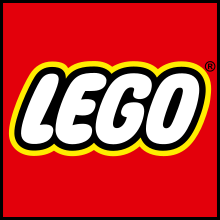 Logo since 1998 | |
| Trade name | The LEGO Group |
|---|---|
| Type | Private Aktieselskab |
| Industry | Toys |
| Founded | 10 August 1932; 89 years ago (1932-08-10) |
| Founder | Ole Kirk Christiansen |
| Headquarters | Billund Denmark |
| Number of locations | 42 offices (2017) |
| Area served | Worldwide |
| Key people |
|
| Products | Lego |
| Revenue | |
| Operating income | |
| Net income | |
| Total assets | |
| Owners |
|
| Number of employees | |
| Website | lego |
Lego System A/S (trade name: The Lego Group) is a Danish toy production company based in Billund.[5] It manufactures Lego-brand toys, consisting mostly of interlocking plastic bricks. The Lego Group has also built several amusement parks around the world, each known as Legoland, and operates numerous retail stores.
The company was founded on 10 August 1932 by Ole Kirk Christiansen.[6] The name Lego is derived from the Danish words leg godt, meaning "play well". In the first half of 2015, The Lego Group became the world's largest toy company by revenue, with sales amounting to US$2.1 billion, surpassing Mattel, which had US$1.9 billion in sales.[7] [8]
History [edit]
| | This section needs expansion. You can help by adding to it. (August 2021) |
The Lego company was founded in 1932 by Ole Kirk Christiansen, a carpenter whose primary business of producing household goods had suffered due to the Great Depression. Initially producing wooden toys, the company later developed a system of interlocking bricks. Manufacturing of plastic Lego bricks began in Denmark in 1947, and since has grown to include factories throughout the world.
In North America, Samsonite managed the Lego brand from 1961 until 1972 (United States) and 1986 (Canada).
Trademark and patents [edit]
Since the expiry of the last standing Lego patent in 1989, a number of companies have produced interlocking bricks that are similar to Lego bricks. The toy company Tyco Toys produced such bricks for a time; other competitors include Mega Bloks and Best-Lock. These competitor products are typically "compatible" with Lego bricks, and are often marketed at a lower cost than Lego sets.
One such competitor is Coko, manufactured by Chinese company Tianjin Coko Toy Co., Ltd. In 2002, Lego Group's Swiss subsidiary Interlego AG sued the company for copyright infringement. A trial court found many Coko bricks to be infringing; Coko was ordered to cease manufacture of the infringing bricks, publish a formal apology in the Beijing Daily, and pay a small fee in damages to Interlego. On appeal, the Beijing High People's Court upheld the trial court's ruling.[9]
In 2003, The Lego Group won a lawsuit in Norway against the marketing group Biltema for its sale of Coko products, on the grounds that the company used product confusion for marketing purposes.[10]
Also in 2003, a large shipment of Lego-like products marketed under the name "Enlighten" was seized by Finnish customs authorities. The packaging of the Enlighten products was similar to official Lego packaging. Their Chinese manufacturer failed to appear in court, and thus Lego won a default action ordering the destruction of the shipment. Lego Group footed the bill for the disposal of the 54,000 sets, citing a desire to avoid brand confusion and protect consumers from potentially inferior products.[11]
In 2004, Best-Lock Construction Toys defeated a patent challenge from Lego in the Oberlandesgericht, Hamburg.
The Lego Group has attempted to trademark the "Lego Indicia", the studded appearance of the Lego brick, hoping to stop production of Mega Bloks. On 24 May 2002, the Federal Court of Canada dismissed the case, asserting the design is functional and therefore ineligible for trademark protection.[12] The Lego Group's appeal was dismissed by the Federal Court of Appeal on 14 July 2003.[13] In October 2005, the Supreme Court ruled unanimously that "Trademark law should not be used to perpetuate monopoly rights enjoyed under now-expired patents" and held that Mega Bloks can continue to manufacture their bricks.[14]
Because of fierce competition from copycat products, the company has always responded by being proactive in their patenting and has over 600 United States–granted design patents to their name.[15]
Financial results [edit]

Lego factory in Kladno, Czech Republic, established in 2000. This is one of several sites in the world where Lego toys are manufactured (Denmark, Hungary, China and Mexico are the others).
In 2003, The Lego Group faced a budget deficit of kr. 1.4 billion (US$220 million at then-current exchange rates; equal to €175 million),[16] causing Poul Plougmann to be replaced by Kjeld Kirk Kristiansen as president. In the following year, almost one thousand employees were laid off, due to budget cuts. However, in October 2004, on reporting an even larger deficit, Kristiansen also stepped down as president, while placing kr. 800 million of his private funds into the company.
In 2005, The Lego Group reported a 2004 net loss of kr. 1,931 million on a total turnover, including Legoland amusement parks, of kr. 7,934 million.
For 2005, the company returned a profit of kr. 702 million, having increased its revenue by 12% to kr. 7,050 million in 2005 against kr. 315 million in 2004. It also cut expenditures and disposed of amusement parks and a factory in Switzerland.
In 2011, sales for the company grew 11%, rising from US$2,847 million in 2010 to US$3,495 million in 2011. Profit for 2011 fiscal year increased from US$661 million to US$776 million. The increased profit was due to the enormous popularity of the new brand Ninjago, which became the company's biggest product introduction ever.[17]
In 2012, it was reported that The Lego Group had become the world's most valuable toy company ahead of Mattel with a value at over US$14.6 billion.[18]
The Lego Group delivered a turnover of kr. 14,142 million in the first half of 2015 with an increase of 18% compared with the same period in 2014 measured in local currency (i.e. excluding the impact of foreign exchange rate changes). Net profit for the first half of 2015 was kr. 3,553 million compared with kr. 2,715 million for the first half of 2014. First half-year sales were driven by double-digit growth across all geographical regions and strong product innovation on themes such as Lego Ninjago, Lego Elves and Lego Creator.[19]
The Lego Group announced on 4 September 2017 its intention to cut 1,400 jobs following reduced revenue and profit in the first half of the year, the first reported decrease in 13 years.[20] The revenue losses are due to a more competitive environment, where the company has to compete not only against its traditional competitors Mattel and Hasbro, but also against technology companies such as Sony or Microsoft as more children use mobile devices for entertainment.[21] The job cuts account for 8 percent of the company's total work force.[20] In May 2018, the company made it to Forbes top 100 World's Most Valuable Brands 2018,[22] being 97th on the list.
Legoland [edit]
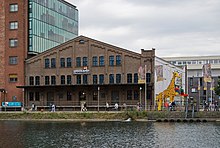
The Lego Group has built eight amusement parks around the world, each known as Legoland. Each park features large-scale Lego models of famous landmarks and miniature Lego models of famous cities, along with Lego themed rides. The first Legoland park was built in Lego's home town of Billund in Denmark. This was followed by Legoland Windsor in England, Legoland California in Carlsbad, US and Legoland Deutschland in Günzburg, Germany. In addition, Legoland Sierksdorf was opened in 1973, but soon closed in 1976.
In July 2005, the Lego Group announced that it had reached a deal with private investment company the Blackstone Group to sell all four parks for €375 million to the Blackstone subsidiary Merlin Entertainments. Under the terms of the deal, The Lego Group would take a 30% share in Merlin Entertainments and positions on their board.[23] The sale of the theme parks was part of a wider strategy to restructure the company to focus on the core business of toy products.
In 2010, Merlin Entertainments opened the first Legoland water park at the Legoland California site. On 15 October 2011, Merlin Entertainments opened their first new Legoland park, Legoland Florida, in Winter Haven, Florida. It is the largest Legoland opened to date at 145 acres, and also only one of the Legoland parks opened in the United States. The other Legoland (opened at a later date) water park was opened near the same location on 26 May 2012 after only four months of construction.
Merlin Entertainments opened their second new Legoland park in Nusajaya, Malaysia under the name Legoland Malaysia on 22 September 2012.[24] It is the first Legoland in Asia and was quickly followed by another Lego-themed water park in the same area. The first Lego hotel has also opened near the site. People who stay in the hotel will also get tickets to the theme park and water park.[25]
Merlin Entertainments has also planned several new Legoland parks: Legoland Dubai, Legoland Nagoya[26] (scheduled to open in 2015), and Legoland Korea[27] (also scheduled to open in 2015). In addition, they have opened four new Legoland Discovery Centres, which take the Legoland concept and scale it down to suit a retail park environment.
Retail stores [edit]
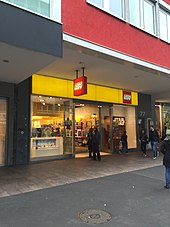
The Lego Group operates 153 retail stores (83 in the United States, 17 in the United Kingdom, 11 in Germany, 10 in Canada, 7 in France, 2 in Spain, 2 in Austria, 2 in Italy, 2 in Serbia, 2 in Denmark, 1 in Belgium, 2 in China, 1 in Sweden, 1 in Poland, 1 in India, 1 in Lithuania, 3 in Mexico and 5 in Turkey[28].).[29] The Lego Group also franchised its store brand to Majid Al Futtaim Group, which opened 6 stores in 2015 (4 in the United Arab Emirates, and 2 in Kuwait).[30]
Europe [edit]
October 2002 saw a significant change in The Lego Group's direct retail policy with the opening of the first so-called Lego Brand Store in Cologne, Germany. The second, in Milton Keynes, UK, followed quickly – several dozen more opened worldwide over the next few years, and most of the existing stores have been remodelled on the new Brand Store template. One of the distinctive features of these new stores is the inclusion of a "Pick-A-Brick" system that allows customers to buy individual bricks in bulk quantities. How a customer buys Lego pieces at a Pick-A-Brick is quite simple: customers fill a large or small cup or bag with their choice of Lego bricks from a large and varied selection and purchase it. The opening of most of these stores, including the 2003 opening of one in the Birmingham Bull Ring shopping centre in England, have been marked by the production of a new, special, limited edition, commemorative Lego Duplo piece. Lego opened the first brand store in its home country Denmark in Copenhagen on December 13, 2010. There are two stores in Austria, one store in Belgium, twelve stores in Germany, seventeen stores in the United Kingdom, six stores in France, five stores in Spain, two stores in Serbia, one store in Sweden, one store in Denmark, and one store in Lithuania for a total of 41 stores in Europe. In 2016, three stores opened in Italy: one in Milan, one in the shopping center near the Orio al Serio International Airport in Bergamo, and another in Verona. In 2020, the total amount of Lego stores in Italy reached 14, covering from North to South.
North America [edit]
In 1992, when the Mall of America opened in Bloomington, Minnesota, one of its premier attractions was the Lego Imagination Center (LIC). An imagination centre is a large Lego store with displays of Lego sculptures and a play area with bins of bricks to build with. The store inventory includes a large selection of Lego sets for sale, including sets which are advertised in Lego catalogues as "Not Available in Any Store". A second imagination centre opened at the Disney Springs (formerly Downtown Disney) at Walt Disney World Resort in Orlando, Florida. Between 1999 and 2005, Lego opened 24 further stores in North America in 23 states. As of 2016, there are 90 Lego stores operating or soon-to-be operating in North America in 32 US states and five Canadian provinces.[31] These stores sell various Lego merchandise, including minifigures, Pick-a-Brick, and custom packaged minifigures.
India [edit]
The first Lego store in India was opened in Chennai, Tamil Nadu in March 2014 by Funskool, under licence from the Lego Group.[32]
Lego Interactive [edit]
Lego Interactive (formerly Lego Media and later Lego Software) was the video game publishing division of The Lego Group.[33] The company was founded as Lego Media in 1996 and headquartered in London, England.[34] In February 1999, Lego Media announced their move into the girls' software industry, starting with Lego Friends.[35] Eventually, The Lego Group opted out of the video game business and Lego Interactive was shut down.[36] Former Lego Interactive staff opened Giant Interactive Entertainment, which later became part of TT Games.[36]
Lego Media also operated a motion picture division, which produced the BBC children's series Little Robots for Cosgrove Hall Films.[37] In 2003, this division was rebranded to Create TV and Film Limited, and became independent from The Lego Group under Lego's majority owner Kirkbi A/S, which allowed Create TV and Film to branch onto other projects.[38] [39] [40] The company later produced Bionicle: Mask of Light, Bionicle 2: Legends of Metru Nui and Bionicle 3: Web of Shadows for Creative Capers Entertainment.[41] In 2005, Kirkbi A/S sold Create TV and Film to its chief executive officer, Vanessa Chapman, and the company was renamed Create Media Ventures Limited. The sale included Little Robots but excluded the Bionicle movies, which were retained by The Lego Group.[42]
Toy production [edit]

Lego products are mass-produced, packaged and shipped on a large scale.
Lego Produktion AG was a major production facility for Lego. It was founded in Switzerland in 1974.[43] At the time of its announced closing in 2001, 30% of the world production of Lego was produced at the Swiss facility in Baar.[44] The Baar facility eventually closed in 2004.[45]
In April 1962, the Lego Group began producing miniature tires; it became the largest tire manufacturing company in 2011, when it produced 381 million tires that year.[46]
Environmental issues [edit]
Lego acknowledges the impact of its operations on the environment, in particular in areas such as climate change, resource and energy use and waste. All manufacturing sites are certified according to the environmental standard ISO 14001. The first Borkum Riffgrund 1 wind turbines off the coast of Germany began producing electricity in February 2015, which will help The Lego Group reach its goal of being based 100% on renewable energy by 2020.[47] The company claims to recycle 90% of its waste and that it had made its operations nearly one-third more energy efficient over the five-year period ending on December 31, 2013.[48] [49] It is seeking alternatives to crude oil as the raw material for its bricks.[50] In June 2015, this results in the establishment, named the Lego Sustainable Materials Centre, which is expected to recruit more than 100 employees, as a significant step towards the 2030 ambition of finding and implementing sustainable alternatives to current materials.[51]
In 2011, Lego bowed to pressure from the environmental campaigning organization Greenpeace, reportedly agreeing to drop supplier Asia Pulp and Paper, and pledging to only use packaging material certified by the Forest Stewardship Council in future.[52] The environmental group had accused Lego, Hasbro, Mattel and Disney of using packaging material sourced from trees cleared out of the Indonesian rainforest.[53]
Lego partnered with the oil company Royal Dutch Shell in the 1960s, using the company's logo in some of its construction sets. This partnership continued until the 1990s, and was renewed again in 2011.[54] In July 2014, Greenpeace launched a global campaign to persuade Lego to cease producing toys carrying the oil company Shell's logo in response to Shell's plans to drill for oil in the Arctic.[55] Shell's PR company valued the most recent two-year deal with Lego at $116 million, and reported that Shell achieved a 7.5% worldwide sales uplift during the promotion video from Iris International.[49] [56] Lego announced that when the latest contract between the two companies comes to an end it will not be renewing it.[57]
As of August 2014, more than 750,000 people worldwide had signed a Greenpeace petition asking Lego to end its partnership with Shell.[58] Lego responded saying they "expect that Shell lives up to their responsibilities wherever they operate" and that they "intend to live up to the long term contract with Shell, which we entered into in 2011."[59] Meanwhile, Greenpeace produced a video campaigning against the Shell partnership; it received extensive press coverage[60] [61] and was viewed more than six million times on YouTube.[62] In October 2014, Lego announced that it would not be renewing its promotional contract with Royal Dutch Shell but did not say when the existing deal with Shell expires. Greenpeace claimed the decision was in response to its campaigning.[63]
Gender equality and human rights [edit]
In January 2014, a handwritten letter to Lego from a seven-year-old American girl, Charlotte Benjamin, received widespread attention in the media. In it the young author complained that there were "more Lego boy people and barely any Lego girls" and observed that "all the girls did was sit at home, go to the beach, and shop, and they had no jobs, but the boys went on adventures, worked, saved people … even swam with sharks".[64] [65]
In June 2014, it was announced that Lego would be launching a new "Research Institute" collection featuring female scientists including a female chemist, palaeontologist, and astronomer.[65] [66] The science-themed project was selected as the latest Lego Ideas winner, and was submitted by Ellen Kooijman, a geochemist in Stockholm.[67] Lego denied claims that the set was introduced to placate criticism of the company by activists, pointing to its Lego Ideas origins. The Research Institute range sold out within a week of its online release in August 2014. The BBC's Tom de Castella reported that Kooijman was pleased with the set's final design, despite the addition of face make-up to her original proposal, and that Becky Francis, professor of education and social justice at King's College London, who had been "very, very disappointed" by Lego Friends, is a fan.[68]
In 2021, Lego released a set entitled "Everyone is Awesome" to celebrate and recognize the LGBTQ+ community. The set includes over 300 pieces and has 11 monochrome minifigures in the colours of the rainbow. The set was designed by Matthew Ashton who said on the official Lego website "The starting point for this was my feeling that we, as a society, could be doing more to show support for each other and appreciate our differences. Being LGBTQIA+ myself, I knew I needed to step up to the plate and make a real statement about love and inclusivity, and generally spread some LEGO® love to everybody who needs it. Children are our role models and they welcome everyone, no matter their background. Something we should all be aspiring to."[69]
In October 2021, Lego Group launched a campaign named "Ready for Girls" as part of its celebration of the UN's International Day of the Girl. The company also announced its plan to remove gender stereotypes from the toy(s) following a review of a study commissioned by the Geena Davis Institute on Gender in Media.[70]
Logos [edit]
Below are historical images of the Lego logo throughout the company's existence.[71]
-

1934–1936
-

1936–1946
-

1946–1948
-

1948–1950
-

1950–1953
-
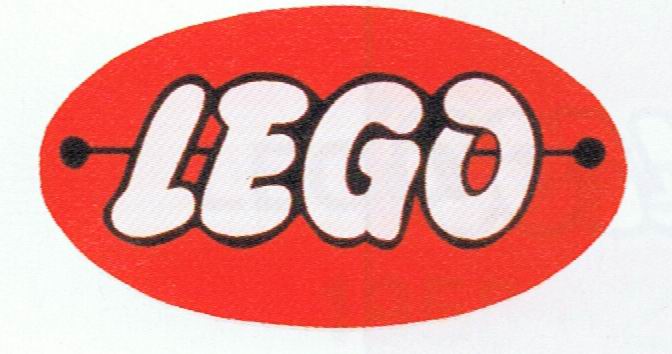
1953–1954
-

1954–1959
-

1959–1964
-

1964–1972
-
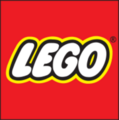
1972–1998
-
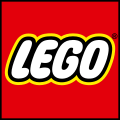
1998–present
References [edit]
- ^ "Jørgen Vig Knudstorp". The LEGO Group. Archived from the original on 7 September 2017. Retrieved 6 September 2017.
- ^ "Executive Leadership Team". The Lego Group. Archived from the original on 18 November 2017. Retrieved 25 November 2017.
- ^ a b c d e Trangbæk, Roar Rude (3 March 2021). "Annual Report 2020" (PDF). The Lego Group. Archived (PDF) from the original on 18 March 2021. Retrieved 30 April 2021.
- ^ http://www.kirkbi.com/business-areas/the-lego-group [ permanent dead link ]
- ^ "About Us". The Lego Group. Archived from the original on 12 January 2013. Retrieved 9 January 2013.
- ^ "Celebrating 80 Years of LEGO". Archived from the original on 30 November 2020. Retrieved 25 May 2019.
- ^ "Here's why Mattel ousted its CEO Bryan Stockton". Fortune. Archived from the original on 4 April 2020. Retrieved 30 December 2016.
- ^ Finans, Ritzau (4 September 2014). "Lego er nu verdens største" [Lego is now the world's largest]. finans.dk (in Danish). Archived from the original on 13 June 2020. Retrieved 28 January 2018.
- ^ "Dual Protection for Industrial Designs Confirmed by Court". CCPIT Patent and Trademark Law Office. Archived from the original on 7 July 2012. Retrieved 9 January 2013.
- ^ "LEGO Group Press Releases". Archived from the original on 27 March 2009. Retrieved 22 October 2007. CS1 maint: bot: original URL status unknown (link)
- ^ "More than 54,000 copies of Lego products were destroyed". Archived from the original on 27 March 2009. Retrieved 22 October 2007. CS1 maint: bot: original URL status unknown (link)
- ^ "Jurisprudence in intellectual property law". The TeleMark. Archived from the original on 7 April 2012. Retrieved 9 January 2013.
- ^ "Kirkbi AG et al. v. Ritvik Holdings Inc.". Telemark. Archived from the original on 7 April 2012. Retrieved 9 January 2013.
- ^ "Mega Bloks wins SCOC ruling on Lego trademark". cbc.ca.
- ^ "Interlego's list of design patents". Ipexl.com. Archived from the original on 26 January 2013. Retrieved 9 October 2012.
- ^ Frien, Bastian (21 August 2012). "The Disguised Dane. Available Online. Accessed on May 4, 2012". Cfo-insight.com. Archived from the original on 23 September 2015. Retrieved 9 October 2012.
- ^ Roar Rude Trangbæk (1 March 2012). "LEGO Group sales up by 17% in 2011". Aboutus.lego.com. Archived from the original on 8 September 2012. Retrieved 9 October 2012.
- ^ Metcalf, Tom (13 March 2013). "LEGO Builds New Billionaires as Toymaker Topples Mattel". Bloomberg. Archived from the original on 19 October 2013. Retrieved 15 October 2013.
- ^ "18 percent global sales growth in the first half of 2015". Archived from the original on 20 August 2016. Retrieved 30 December 2016.
- ^ a b Kottasová, Ivana (5 September 2017). "Lego slashes 1,400 jobs as sales slump". CNNMoney. Archived from the original on 5 September 2017. Retrieved 6 September 2017.
- ^ Tsang, Amie (5 September 2017). "Lego Will Cut 1,400 Jobs as Profit Dips, Despite Big-Screen Heroics". The New York Times. ISSN 0362-4331. Archived from the original on 5 September 2017. Retrieved 6 September 2017.
- ^ Badenhausen, Kurt (23 May 2018). "The World's Most Valuable Brands 2018". Forbes. Archived from the original on 20 February 2019. Retrieved 19 February 2019.
- ^ "LEGO Group in partnership with Merlin Entertainments" (Press release). LEGO Group. 13 July 2005. Archived from the original on 15 June 2009. Retrieved 17 September 2010.
- ^ "PM: Legoland Malaysia to be catalyst for development". thestar.com.my. 22 September 2012. Archived from the original on 23 September 2012. Retrieved 23 September 2012.
- ^ "First SEA Legoland Hotel for Nusajaya". The Sun Daily. 25 April 2012. Archived from the original on 17 September 2012. Retrieved 29 April 2012.
- ^ "LEGO planning to build Legoland in Nagoya". Archived from the original on 31 October 2011.
- ^ "英 멀린그룹, 레고랜드 춘천 1억달러 투자 신고" [British Merlin Group Reports $100 Million Investment in Legoland Chuncheon] (in Korean). Archived from the original on 4 October 2013. Retrieved 5 April 2013.
- ^ "Archived copy". Archived from the original on 25 August 2021. Retrieved 25 August 2021. CS1 maint: archived copy as title (link)
- ^ "Stores". Lego Group. Archived from the original on 7 August 2017. Retrieved 3 October 2017.
- ^ "Lego Store - Building On A Fun Legacy". Majid Al Futtaim Group. Archived from the original on 18 August 2019. Retrieved 18 August 2019.
- ^ "LEGO Stores Home". Stores.lego.com. Archived from the original on 20 February 2016. Retrieved 19 February 2016.
- ^ Narasimhan, T E (1 September 2015). "Funskool raises its game". Business Standard. Archived from the original on 5 December 2018. Retrieved 4 December 2018.
- ^ "EA and LEGO Interactive Ship Next Generation Videogame Based on Best-Selling LEGO Line: BIONICLE". The Free Library. 20 October 2003. Archived from the original on 7 October 2018. Retrieved 19 October 2018.
- ^ "LEGO Media International Introduces Three New Software Titles". The Free Library. 22 September 1998. Archived from the original on 7 October 2018. Retrieved 19 October 2018.
- ^ Slaton, Joyce (23 February 1998). "What Do Girls Want, Anyhow?". Wired. Archived from the original on 10 January 2021. Retrieved 19 October 2018.
- ^ a b Wallis, Alistair (9 November 2006). "Playing Catch Up: Traveller's Tales' Jon Burton". Gamasutra. Archived from the original on 17 October 2019. Retrieved 19 October 2018.
- ^ "little robots tv series". mikebrownlow-wix. Archived from the original on 10 January 2021. Retrieved 24 March 2019.
- ^ Ball, Ryan (21 January 2003). "New Identity for LEGO Media". animationmagazine.net. Archived from the original on 31 December 2015. Retrieved 24 March 2019.
- ^ "Create TV & Film Defines New Management Structure". Animation World Network. Archived from the original on 24 March 2019. Retrieved 24 March 2019.
- ^ Cozens, Claire (23 July 2003). "BBC denies that Lego link breaches code". The Guardian. Archived from the original on 24 March 2019. Retrieved 24 March 2019 – via www.theguardian.com.
- ^ Ball, Ryan (22 March 2004). "Cartoon Network Grabs BIONICLE Movie". animationmagazine.net. Archived from the original on 19 August 2012. Retrieved 24 March 2019.
- ^ Ball, Ryan (18 February 2005). "Create TV & Film Under New Ownership". animationmagazine.net. Archived from the original on 24 March 2019. Retrieved 24 March 2019.
- ^ "Ole Kirk Christiansen Biography: Amazing History of LEGO Company". Entrepreneur Success Stories. 7 November 2016. Archived from the original on 10 January 2021. Retrieved 20 May 2018.
- ^ "Produktionsstandort Baar am Ende: Scharfe Restrukturierung im Lego-Konzern – NZZ" (in German). nzz.ch. 2 March 2001. Archived from the original on 22 May 2018. Retrieved 20 May 2018.
- ^ "Preparations of shutdown of factory in Baar, Switzerland". Lego. 27 October 2003. Archived from the original on 21 May 2018. Retrieved 20 May 2018.
- ^ Terdiman, Daniel (4 April 2012). "Rolling, rolling, rolling: Lego, the world's biggest tire maker". CNET. Archived from the original on 14 July 2019. Retrieved 14 July 2019.
- ^ Vestberg, Morten. "Environment". Lego. Archived from the original on 28 June 2014. Retrieved 3 July 2014.
- ^ "LEGO Group Responsibility Report 2013" (PDF). The Lego Group. p. 12. Archived from the original (PDF) on 14 July 2014. Retrieved 3 July 2014.
- ^ a b Vaughan, Adam (1 July 2014). "Greenpeace urges LEGO to end Shell partnership". The Guardian. Archived from the original on 6 July 2017. Retrieved 3 July 2014.
- ^ Venables, Michael (April 2013). "How LEGO Makes Safe, Quality, Diverse and Irresistible Toys Everyone Wants: Part Two" Archived 9 September 2017 at the Wayback Machine, Forbes, 20 April 2014. Accessed 3 July 2013
- ^ "LEGO Group to invest 1 Billion DKK boosting search for sustainable materials". The Lego Group. Archived from the original on 19 January 2017. Retrieved 30 December 2016.
- ^ "LEGO Drops APP Packaging After Greenpeace Campaign" Archived 10 June 2016 at the Wayback Machine, Environmental Leader, 15 July 2011. Accessed 3 July 2014
- ^ Stine, Rachel (1 September 2011) "Analysis: toy manufacturing – LEGO builds a sustainable supply chain" Archived 29 August 2017 at the Wayback Machine, Ethical Corporation, 1 September 2011. Accessed 3 July 2014
- ^ Katie, Collins (8 July 2014). "Greenpeace is right, Shell-branded LEGO is ill-judged". wired.co.uk. Conde Nast. Archived from the original on 11 July 2014. Retrieved 8 July 2014.
- ^ Tilley, Jonathan (1 July 2014) "Greenpeace puts pressure on Lego's Shell-branded toys" Archived 10 June 2017 at the Wayback Machine, PR Week, 1 July 2014. Accessed 3 July 2014
- ^ "CENSORED: The details behind Shell's deal with LEGO" on YouTube
- ^ Vaughan, Adam (9 October 2014). "Lego ends Shell partnership following Greenpeace campaign". The Guardian. Archived from the original on 29 January 2018. Retrieved 28 January 2018.
- ^ "Shell & LEGO – Stop Playing with the Arctic". Greenpeace. Archived from the original on 19 September 2016. Retrieved 1 August 2014.
- ^ "Comment on Greenpeace campaign using the LEGO® brand". LEGO. Archived from the original on 12 July 2014. Retrieved 1 July 2014.
- ^ "This Is Why People Are So Upset at LEGO". Time. Archived from the original on 13 July 2014. Retrieved 11 July 2014.
- ^ Vaughan, Adam (9 July 2014). "LEGO told 'everything is not awesome' in viral Greenpeace video". The Guardian. Archived from the original on 10 August 2014. Retrieved 9 July 2014.
- ^ LEGO: Everything is NOT awesome. on YouTube
- ^ "LEGO 'won't renew' contract with Shell after Greenpeace campaign". BBC News. 10 October 2014. Archived from the original on 10 October 2014. Retrieved 11 October 2014.
- ^ Gander, Kashmira (2014). "LEGO told off by 7-year-old girl for promoting gender stereotypes" Archived 25 September 2015 at the Wayback Machine, The Independent, 3 February 2014. Retrieved 10 July 2014
- ^ a b Alter, Charlotte (2014). "Soon There Will Be Female Scientist LEGOs" Archived 14 March 2017 at the Wayback Machine, Time, 4 June 2014. Retrieved 10 July 2014
- ^ Shron, Alina (2014). "Lego listens to the girls" Archived 2 July 2014 at the Wayback Machine, The Copenhagen Post, 10 June 2014. Retrieved 10 July 2014
- ^ Gambino, Lauren (2014). "LEGO to launch female scientists series after online campaign" Archived 17 June 2017 at the Wayback Machine, The Guardian, 4 June 2014. Retrieved 10 July 2014
- ^ de Castella, Tom (6 August 2014). "How did LEGO become a gender battleground?". www.bbc.co.uk. Archived from the original on 27 November 2014. Retrieved 30 November 2014.
- ^ "Why I designed "Everyone is Awesome"". Archived from the original on 22 July 2021. Retrieved 22 July 2021.
- ^ Grantham-Philips, Wyatte. "Lego announces plans to remove gender stereotypes from toys, following global survey". USA TODAY . Retrieved 19 October 2021.
- ^ "The LEGO Group History". Lego. 9 January 2012. Archived from the original on 21 April 2019. Retrieved 20 February 2015.
External links [edit]
- Official website
How Much Money Does Lego Make A Year
Source: https://en.wikipedia.org/wiki/The_Lego_Group
Posted by: cardillovotisent.blogspot.com

0 Response to "How Much Money Does Lego Make A Year"
Post a Comment